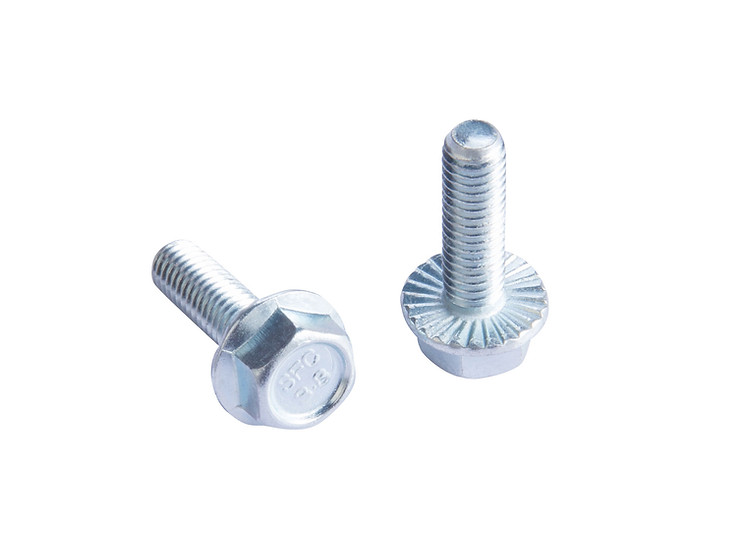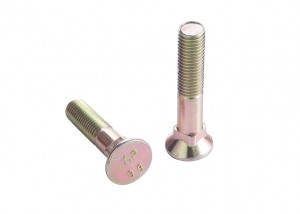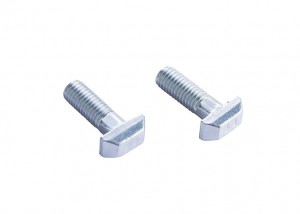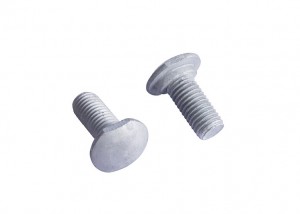Flange screws are mainly composed of hexagon heads, flanges and screws. Flange bolts are a common type of fastener. Because of its accurate decoration and strong bearing capacity, it is widely used in highway, railway bridges, including industrial and civil construction, lifting machinery and other heavy machinery. very broad.
Hexagon flange bolts are widely used in industrial equipment because they have the characteristics of accurate decoration and strong endurance. They are widely used in highways and railway bridges, including industrial and civil buildings, cranes, excavators, etc. on heavy machinery. With the changes in market demand, various new types of hexagonal flange bolts have also been derived. For example, cross groove concave and convex hexagonal head bolts are supplements to hexagonal flange bolts. Now let's talk about hexagonal flange bolts. basic specifications and usage.
Hex bolts are the most widely used type of bolts. Its grade A and grade B bolts are used for important occasions where assembly accuracy is required, and where they are subjected to large shock, vibration or alternating loads. The C-grade bolts are used for occasions where the surface is relatively rough and the assembly accuracy is not required. The threads on the bolts are generally ordinary threads. The West Asian ordinary thread bolts have better self-locking properties and are mainly used on thin-walled parts or in situations where they are subjected to shock, vibration or alternating loads. General bolts are made of partial threads, and full-threaded bolts are mainly used for bolts with short nominal lengths and occasions requiring longer threads.
1. Specifications of hexagonal flange bolts
GB/T5789-1986 Hexagon Flange Bolts Enlarged Series Class B
GB/T5790-1986 Hexagon Flange Bolts Enlarged Series Thin Rod Class B
GB/T16674.1-2004 Hexagon flange bolts small series
GB/T16674.2-2004 Hexagon flange bolts, fine pitch, small series
National standard for hexagonal flange bolts GB/T16674.2-2004
The standard stipulates that the thread specifications are M8×1-M16×1.5, fine thread, performance grades are 8.8, 9.8, 10.9, 12.9 and A2-70, and the product grade is A-grade small hexagonal series fine thread
Marking method according to GB/T1237
Thread specification d=M12×1.25, fine thread, nominal length L=80mm, F type or U type can be selected by the manufacturer, the performance grade is 8.8, the surface is oxidized, and the product grade is A grade of small hexagonal series hexagonal flange Marking of face bolts
Bolt GB/T16672.2 M12×1.25×80
Second, the use of hexagonal flange bolts
The head of the hexagonal flange bolt is composed of a hexagonal head and a flange surface. Its "support area to stress area word ratio" is larger than that of ordinary hexagonal head bolts, so this kind of bolt can withstand higher pre-tightening force and prevent The loose performance is also good, so it is widely used in automobile engines, heavy machinery and other products. The hexagonal head has a hole and a slotted bolt. When in use, the bolt can be locked by a mechanical method, and the anti-loosening is reliable.
Three, the basic classification of flange bolts
1. Hexagon head screw with hole bolt
The cotter pin hole is made on the screw to pass through the wire hole, and the mechanical loosening is adopted to prevent loosening reliably.
2. Hexagon head reaming hole bolts
Bolts with hinged holes can precisely fix the mutual position of the linked parts, and can withstand shearing and extrusion generated in the transverse direction
3. Cross groove concave and convex hexagon head bolts
Easy to install and tighten, mainly used for light industry and instrumentation with less load
4. Square head bolt
The size of the square head is larger, and the force-bearing surface is also larger, which is convenient for the wrench to clamp its head, or rely on other parts to prevent rotation. Can also be used in parts with T-slots to adjust bolt position. Class C square head bolts are often used on relatively rough structures
5. Countersunk head bolts
The square neck or tenon has the function of preventing rotation, and is mostly used in occasions where the surface of the connected parts is required to be flat or smooth.
6. T-slot bolts
T-slot bolts are suitable for applications where the bolts can only be connected from one side of the parts to be connected. Insert the bolt into the T-slot and then turn it 90 degrees, so that the bolt cannot be disengaged; it can also be used in occasions with compact structure requirements.
7. Anchor bolts are specially used for pre-embedded concrete foundations, and are used for fixing the base of machines and equipment. They are mostly used in places and tooling that need to be frequently disassembled and connected.
8. High-strength bolts for rigid grid bolts and ball joints
High strength, mainly used for highway and railway bridges, industrial and civil buildings, towers, cranes.
The basic classification of several new hexagonal flange bolts is specially introduced above. These are made according to the latest market demand and have their specific usage scenarios. For example, T-slot bolts can be well connected to different styles. At the same time, these parts can also be used as an independent entity, such as each section or connection in the railway, which can move freely, so as to avoid dead knots in the connection and affect future maintenance and operation. It is widely used in relatively compact connections. in an industrial environment.








